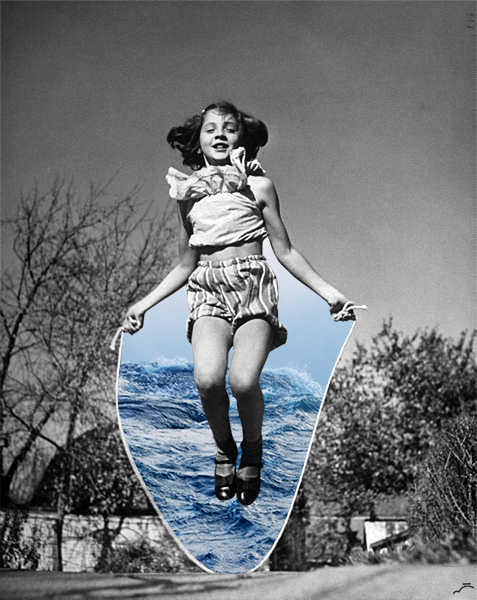As part of my first project of the UAL Art Foundation I have been looking at the little-known Turkish artist Merve Ozaslan. As the theme of the project is 'Land and Water' her collages really caught my eye as an interesting and surreal juxtaposition of the opposing themes.

Her collages are very playful and fun. She uses black and white vintage photographs with colourful images of landscape and water. I like the contrast between the the monochrome and colour - I find it very striking.

I think they pose ideas about imagination and dreams. People who live in the city often dream of moving to the ideal tranquility of the coast and these collages seem to emalgamate these kind of ideas to me. The black and white of the current situation shows its dreariness and unattractiveness; in contrast the beautiful colour images of the sea show its desirability.

Her collages explore the relationship between humanity and nature. I would be interested in incorporating some of these ideas into my projects and looking at other similar artists.
All the above images are taken from her series Natural Act.
Ozaslan's information and social networks: https://www.behance.net/merveozaslan

Her collages are very playful and fun. She uses black and white vintage photographs with colourful images of landscape and water. I like the contrast between the the monochrome and colour - I find it very striking.

I think they pose ideas about imagination and dreams. People who live in the city often dream of moving to the ideal tranquility of the coast and these collages seem to emalgamate these kind of ideas to me. The black and white of the current situation shows its dreariness and unattractiveness; in contrast the beautiful colour images of the sea show its desirability.

Her collages explore the relationship between humanity and nature. I would be interested in incorporating some of these ideas into my projects and looking at other similar artists.
All the above images are taken from her series Natural Act.
Ozaslan's information and social networks: https://www.behance.net/merveozaslan





